Echinodorus parviflorus
Scientific name: Echinodorus parviflorus
Family: Alismataceae
Maximum size reached under cultivation: 5 - 15 cm (1.97 - 5.91 inch)
014
Recommended pH range: 6.2 - 7.2
Recommended water hardness: 4 - 18°dGH (71.43 - 321.43ppm)
0°C 32°F30°C 86°F
Recommended temperature range: 22 - 28 °C (71.6 - 82.4°F)
Preferred propagation method: Runners
Native to: South America
Growth rate: Slow
Recommended substrate: Gravel
Lighting requirements: Medium
Ideal placement in tank: Foreground
Family
Alismataceae
Common Name
Dwarf Amazon Sword
Origin
Echinodorus parviflorus is native to South America, specifically found in regions such as Bolivia and Peru. In the wild, it thrives in shallow waters and wetlands, where it can grow both fully submerged and partially emersed.
Propagation
Echinodorus parviflorus propagates primarily through runners. The mother plant sends out horizontal runners, and daughter plants form at intervals along these runners. Once the daughter plants have developed their own root systems, they can be gently separated and replanted in the substrate to grow independently. Propagation via runners is the most effective method in aquariums, as it allows for quick and healthy multiplication of the plant.
While the plant is technically a rhizome plant, rhizome division is not commonly used for propagation in aquariums. It is essential to provide a nutrient-rich substrate to support the new plants as they establish themselves. Adding root tabs to the substrate helps promote healthy root growth and ensures the young plants thrive in their new environment.
Difficulty
Easy. Echinodorus parviflorus is a hardy, low-maintenance plant, suitable for both beginner and experienced aquarists. It adapts well to a variety of water conditions and requires minimal attention beyond ensuring adequate nutrients and appropriate lighting levels.
Short Description
Echinodorus parviflorus, commonly known as the Dwarf Amazon Sword, is a highly sought-after plant for foreground placement in aquariums due to its small size and attractive dark green, lance-shaped leaves. Reaching heights of 5 to 15 cm (1.97 - 5.91 inches), it creates a lush, green carpet effect in the front of the tank when planted in groups. The plant is slow-growing but, with proper care, adds a striking visual element to any aquascape.
This plant thrives in medium lighting and prefers a nutrient-rich gravel substrate to support its growth. Although slow-growing, regular fertilization can help maintain its vibrant color and promote healthy root development. Its dark green leaves offer an excellent contrast to lighter green plants, and when planted in small clusters, Echinodorus parviflorus creates a stunning natural effect in the aquarium.
Maintenance and Care
Echinodorus parviflorus thrives in a pH range of 6.2 to 7.2 and tolerates water hardness from 4 to 18°N (71.43 - 321.43 ppm). The ideal temperature range is 22 - 28°C (71.6 - 82.4°F), making it suitable for tropical freshwater aquariums. It prefers a gravel substrate, which supports its root development, and benefits from the use of root tabs or other nutrient supplements to ensure optimal growth.
Although this plant is slow-growing, it requires little maintenance aside from occasional pruning of old or decaying leaves to keep it healthy and visually appealing. The low-growing nature of Echinodorus parviflorus makes it perfect for the foreground of aquariums, as it won't overshadow other plants or dominate tank space. As long as its lighting and nutrient needs are met, it will thrive and provide a beautiful, lush addition to any aquarium setup.
Compatibility
This plant is compatible with a wide variety of peaceful fish species. Its dense leaves provide excellent cover for small fish and fry, offering shelter and hiding spots. Echinodorus parviflorus is well-suited for community tanks and can contribute to creating a natural-looking aquascape. While herbivorous fish may occasionally nibble on its leaves, the plant is generally robust enough to withstand minor grazing. Additionally, the plant’s thick root system can help stabilize the substrate, making it a practical and decorative addition to most aquariums.
Submersion and Aquascaping
Fully submersible, Echinodorus parviflorus is a favorite among aquascaping enthusiasts due to its compact size, slow growth rate, and aesthetic appeal. The dark green, lance-shaped leaves create a beautiful contrast against other aquatic plants, particularly in the foreground of an aquascape. Its slow growth rate makes it ideal for low-maintenance aquascapes where rapid trimming is unnecessary.
This plant works well in setups designed to replicate South American environments, where it can be paired with driftwood, rocks, and other South American plant species. Its ability to thrive with minimal care and low maintenance makes it a popular choice for both beginner and experienced aquarists looking to add a touch of lush greenery to their tanks.

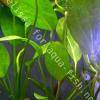 Echinodorus “Ozelot”
Echinodorus “Ozelot” Echinodorus “Red Flame”
Echinodorus “Red Flame”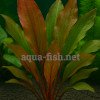 Echinodorus “Red Special”
Echinodorus “Red Special”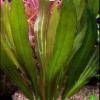 Echinodorus “Rubin”
Echinodorus “Rubin” Echinodorus “Tricolour”
Echinodorus “Tricolour” Echinodorus amazonicus
Echinodorus amazonicus Echinodorus angustifolius
Echinodorus angustifolius Echinodorus bleheri
Echinodorus bleheri Echinodorus cordifolius
Echinodorus cordifolius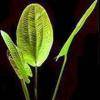 Echinodorus grandiflorus
Echinodorus grandiflorus Echinodorus horemanii
Echinodorus horemanii Echinodorus latifolius
Echinodorus latifolius Echinodorus macrophyllus
Echinodorus macrophyllus Echinodorus major
Echinodorus major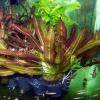 Echinodorus osiris
Echinodorus osiris Echinodorus quadricostatus
Echinodorus quadricostatus Echinodorus schlueteri
Echinodorus schlueteri Echinodorus subalatus
Echinodorus subalatus Echinodorus tenellus
Echinodorus tenellus Echinodorus uruguayensis
Echinodorus uruguayensis Sagittaria graminea
Sagittaria graminea Sagittaria platyphylla
Sagittaria platyphylla Sagittaria subulata
Sagittaria subulata